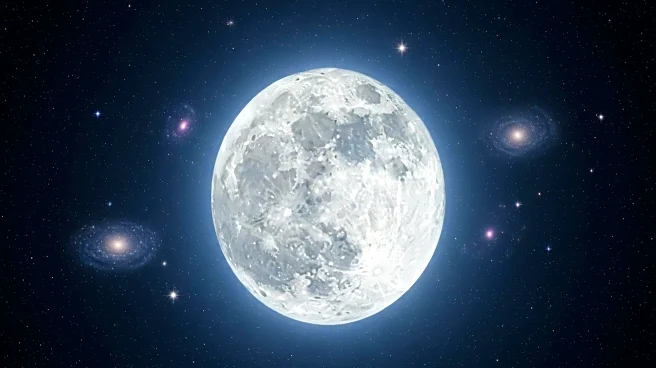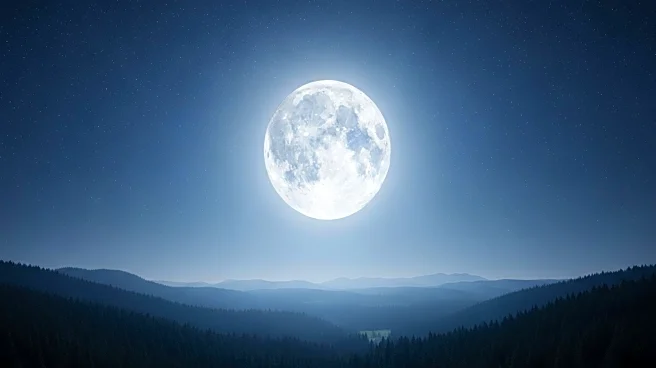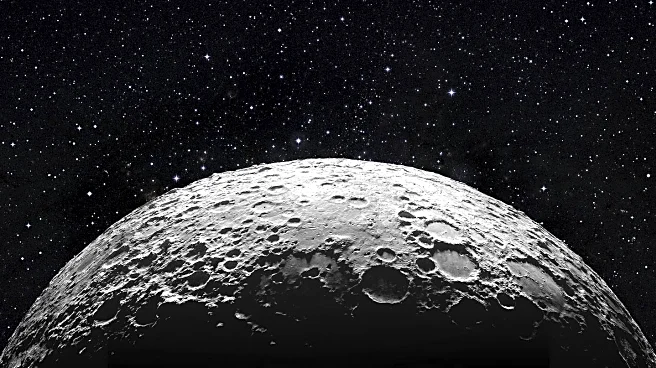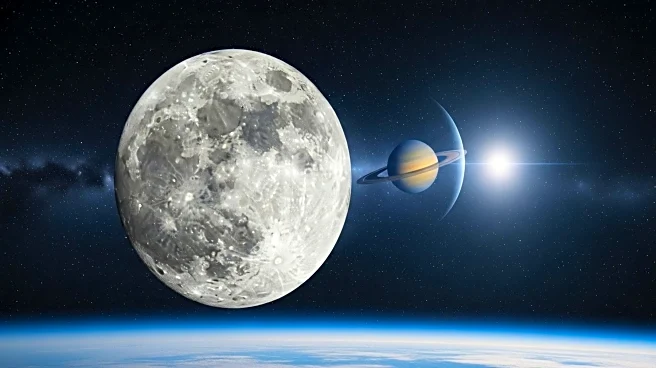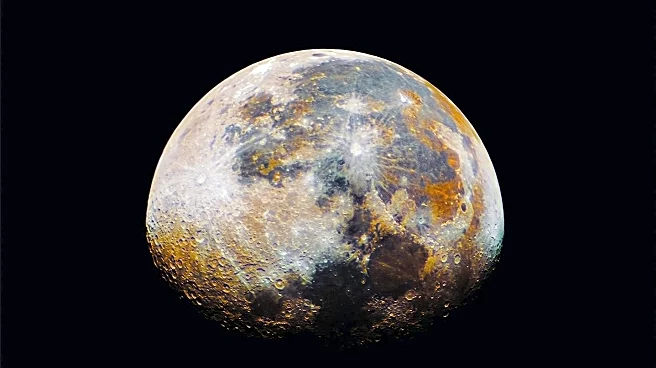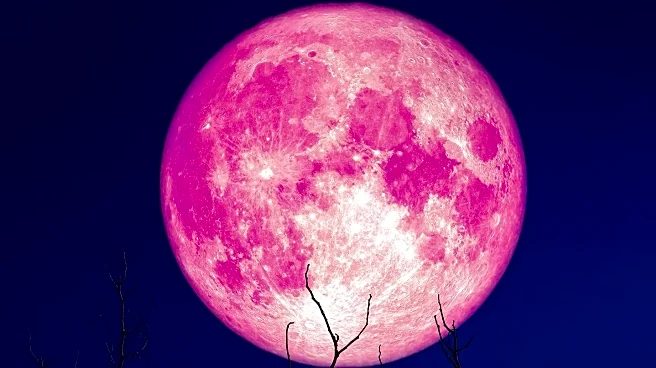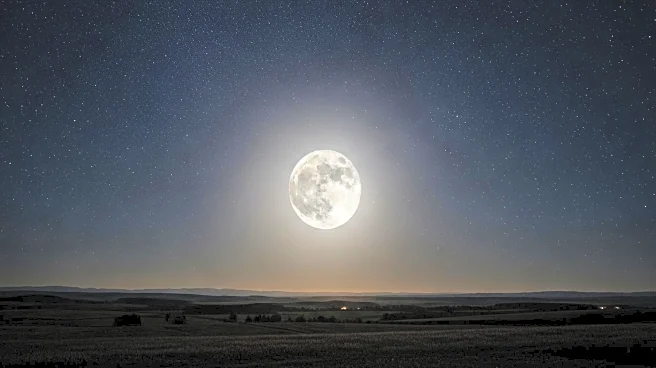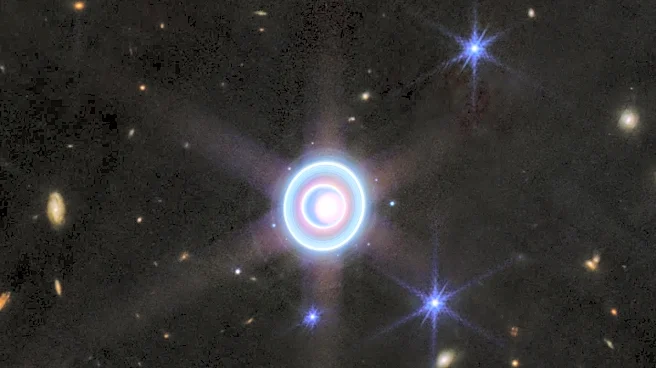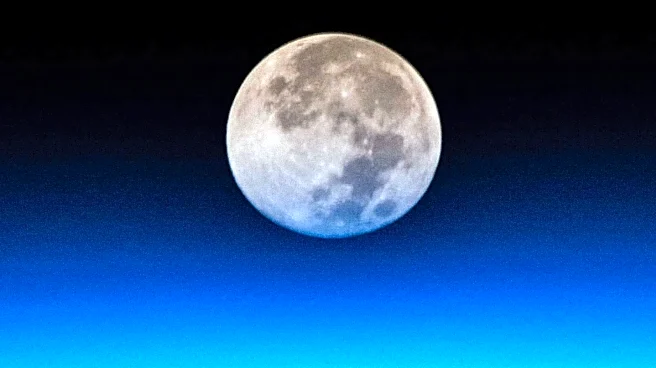What is the story about?
What's Happening?
October's full harvest moon, the first supermoon of the year, will be visible from Monday night into early Tuesday. This supermoon, occurring at its fullest around 11:48 p.m. ET, is the first of three consecutive supermoons this year. A supermoon appears larger and fuller as the moon reaches perigee, its closest point to Earth. Historically, the harvest moon's bright light aided farmers in completing their harvests, as noted by The Old Farmer's Almanac. NASA's Noah Petro encourages people to observe the moon regularly to notice subtle changes. This event follows NASA's announcement of its latest astronaut class, with plans for the Artemis II mission to circle the moon early next year.
Why It's Important?
The occurrence of a supermoon is significant for both scientific observation and public interest. It provides an opportunity for astronomers and enthusiasts to study lunar phenomena and engage with celestial events. The timing of this supermoon is particularly noteworthy as it coincides with NASA's advancements in lunar exploration, including the upcoming Artemis II mission. This mission represents a step forward in human space exploration, potentially leading to future missions to Mars. The visibility of the supermoon can also inspire public interest in space science and exploration, fostering educational opportunities and scientific curiosity.
What's Next?
Following the harvest supermoon, additional celestial events are anticipated, including the Beaver moon on November 5 and the Cold moon on December 4. Meteor showers such as the Draconids and Orionids will also occur in October, providing further opportunities for skywatching. NASA's Artemis II mission, scheduled for early next year, will involve a crew of astronauts circling the moon, marking a significant milestone in lunar exploration. This mission is part of NASA's broader Artemis program, aiming to land astronauts on the lunar surface and eventually pave the way for human exploration of Mars.
Beyond the Headlines
The supermoon and upcoming celestial events highlight the cultural and scientific significance of lunar observation. These events offer a chance to reflect on humanity's relationship with the moon, from historical agricultural practices to modern space exploration. The Artemis program's progress underscores the potential for international collaboration in space exploration, as well as the ethical considerations of expanding human presence beyond Earth. The visibility of these celestial phenomena can also enhance public appreciation for astronomy and the natural world.
AI Generated Content
Do you find this article useful?
